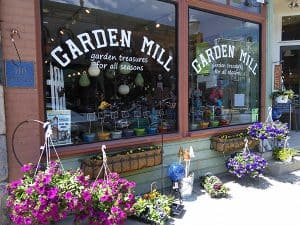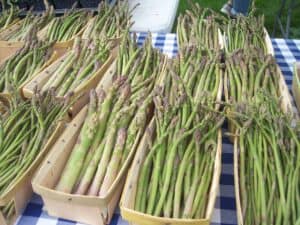
By Sue Whitmarsh, photos by Burrill Strong.
“Dear common flower, that grow’st beside the way,
Fringing the dusty road with harmless gold,
First pledge of blithesome May.”
The dandelions and buttercups
Gild all the lawn; the drowsy bee
Stumbles among the clover-tops,
And summer sweetens all but me.” – John Burroughs
For just over a week or so, the lovely dandelion has been opening and closing its bright yellow visage like clockwork, in tune with the sunrise and sunset each day.
Other than forsythia, snowdrops, and crocuses, this much maligned perennial is perhaps the first splash of color to adorn our landscapes after it has lain dormant for the better part of six months, and I for one, welcome their sunny smiles.

Etymology
Common dandelion (Taraxacum officinale) is a perennial in the sunflower family (Asteraceae), and is therefore often a symbol of the sun. It has several other common names including bitterwort, blow-ball, cankerwort, clockflower, Irish daisy, lion’s tooth, piss-in-bed, pissinlit, priest’s crown, puffball, swine’s snout, telltime, and yellow gowan. Though classed as a weed, the dandelion, a member of the daisy family, isn’t noxious, which is defined as causing a threat ecologically, economically, or to public health.
Instead, the plant’s biggest faux pas is that it spreads easily through the seeds carried on the wind by its trademark puffball fluff. The common name dandelion comes from the French dent de lion, or lion’s tooth, in reference to the plant’s jagged-edged leaves. Some also liken the yellow-gold flower to a lion’s mane. Symbolically, dandelions evoke associations with courage, pride, and family–communication and connection.

Origin and Uses
Originally brought to North America from Europe and Asia as a vegetable, dandelions have many culinary uses. They’re actually very high in vitamins, and their leaves can be added to salads like any lettuce. The taproot can be ground into a coffee substitute or made into tea, and in traditional Chinese and Native American medicine, it has long been used to treat stomach and liver conditions. Herbalists today believe that dandelion can aid in the treatment of many ailments, including acne, eczema, high cholesterol, heartburn, gastrointestinal disorders, diabetes, and even cancer.
Folklore and Symbolism
The common dandelion boasts a rich and quite charming backstory. It has been dubbed the rustic oracle or Shepherd’s Clock, since its flowers always open at around sunrise, and close at dusk. The dandelion is also the only flower that represents the three celestial bodies of the sun, moon, and stars: the yellow flower resembles the sun, the puff ball resembles the moon, and the dispersing seeds resemble the stars.

A Childhood Delight
Dandelions have long held a fascination for young children. Only yesterday, my 11-month-old granddaughter spent a happy afternoon crouching down picking the dandelions in my front yard and handing them to me.
In medieval times, children would hold a yellow dandelion flower underneath their chin, and if a golden glow appeared, it meant that the child would grow up to be rich. In 18th century England, the more golden the glow, the sweeter and kinder they were said to be. Dandelions have long been associated with the qualities of warmth, healing, radiance, illumination, growth and transformation. Dandelions also represent clarity, strength, and the ability to overcome adversity. When dandelions appear in dreams, they are thought to represent happy unions. They are also considered to be symbols of hope, summer, and childhood.

Dandelion Dreams
Who doesn’t remember picking a dandelion that has gone to seed and blowing on it? It is said that blowing the seeds off of a dandelion will carry your thoughts and dreams to your loved one, and that making a wish immediately before blowing on a dandelion means that your wish just might come true.
Another common belief is that the number of seeds left on the stalk after blowing away at the top will predict the current hour of day, hence the name Dandelion Clock.

Ecological Importance
According to the British Ecological Society, dandelions are rich in both pollen and nectar, providing a great source of food for pollinators such as bees. Each bright yellow head contains around 100 individual flowers, meaning bees, butterflies and hoverflies flock to them, feasting on their goodness. As bees and other flying insects emerge from hibernation hungry and looking for food, experts recommend leaving your dandelions free to bloom.
Furthermore, the widespread use of pesticide is also one of the leading causes of firefly decline, and who doesn’t delight in the sight of lightening bugs dancing across the lawn on a summer’s evening? I know I would rather provide a haven for happy fireflies than destroy it. (Remember, if you do like to catch fireflies in a jar, be sure to let them go within the hour.)
Flowering bee lawns that attract pollinators add a rich biodiversity to the landscape and need less maintenance, costing you less money. You’ll also avoid the stress of keeping up with your neighbor’s perfect lawn, giving you more time to enjoy planting and tending to your flowers, shrubs and vegetables. Avoiding noxious chemical treatments also ensure that your pets–and children and grandchildren–can safely enjoy your yard without being exposed to poisonous substances underfoot.

Despite all these lovely facts and their simple, joyful beauty, many seeking the ideal of an ‘unblemished’ velvety green lawn will employ all manner of harsh chemicals and other means to ensure the dandelion’s demise at any cost. Personally, I do not view the dandelion as a weed, a weed being a plant considered undesirable in a particular situation, a plant in the wrong place as it were, and I wish others would try not to pass judgment when I and many others like me, happily choose to let the dandelions be.
“What I need is the dandelion in the spring. The bright yellow that means rebirth instead of destruction. The promise that life can go on, no matter how bad our losses. That it can be good again.” – Suzanne Collins, Mockingjay
Enjoy this lovely story by Hans Christian Andersen
Learn how to make dandelion tea from the MiGardener
Find more dandelion recipes here
Save the date to join the Chelsea Zero Waste Coalition on June 2 at 7 p.m. to talk about all things gardening. Bring your gardening tips and questions to share.


















Sue, thank so much–dandelions were the first bouquet my children brought to me, so it’s wonderful to see them honored on Mothers Day! This article taught me even more about how unique these little yellow flowers are. “As a flower symbol, dandelion is the symbol of emotional healing. Since they can endure almost any living condition, they represent overcoming every hardship by standing strong and proud.” We certainly can use the wisdom of the dandelion in these challenging times!
https://flowermeanings.org/dandelion-flower-meaning/
What a great article!!! I enjoyed and learned so much it. I have always loved dandelions in my lawn but some of my neighbors didn’t. How unfortunate that dangerous chemicals are frequently used to destroy a beautiful and useful plant. When we we ever learn?!
When our son was about 5 years old, he failed to arrive home from kindergarten at lunchtime. Tracing his usual path, I found him happily picking dandelions in a churchyard that was on his way home. “They were just so beautiful…”
Lovely article, sis; may it be widely read, and heeded.
And a beautiful quote at the end. x